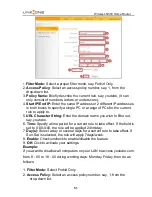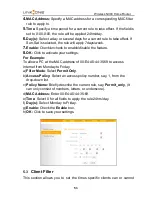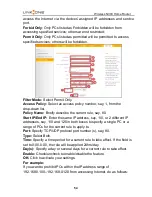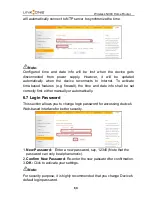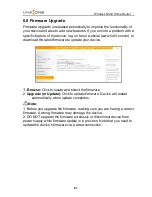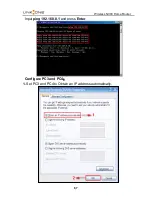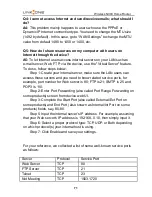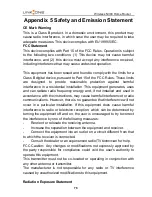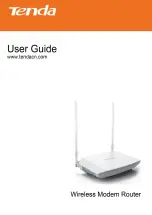
Wireless N300 Home Router
.
64
resolves queries for these names into IP addresses for the purpose of
locating computer services and devices worldwide. An often-used
analogy to explain the Domain Name System is that it serves as the
phone book for the Internet by translating human-friendly computer
hostnames into IP addresses.
WDS
A wireless distribution system (WDS) is a system enabling the wireless
interconnection of access points in an IEEE 802.11 network. It allows a
wireless network to be expanded using multiple access points without the
traditional requirement for a wired backbone to link them. All base stations
in a wireless distribution system must be configured to use the same radio
channel, method of encryption (none, WEP, or WPA) and the same
encryption keys. They may be configured to different service set
identifiers. WDS also requires every base station to be configured to
forward to others in the system. WDS may also be considered a repeater
mode because it appears to bridge and accept wireless clients at the
same time (unlike traditional bridging).WDS may be incompatible
between different products (even occasionally from the same vendor)
since it is not certified by the Wi-Fi Alliance. WDS may provide two modes
of wireless AP-to-AP connectivity:
Wireless bridging, in which WDS APs communicate only with each other
and don't allow wireless clients or stations (STA) to access them.
Wireless repeating, in which APs communicate with each other and with
wireless STAs.
DMZ
In computer security, a DMZ (sometimes referred to as a perimeter
networking) is a physical or logical subnetwork that contains and exposes
an organization's external-facing services to a larger untrusted network,
usually the Internet. The purpose of a DMZ is to add an additional layer of
security to an organization's local area network (LAN); an external
attacker only has access to equipment in the DMZ, rather than any other
part of the network. Hosts in the DMZ have limited connectivity to specific
hosts in the internal network, although communication with other hosts in
the DMZ and to the external network is allowed. This allows hosts in the
DMZ to provide services to both the internal and external network, while


